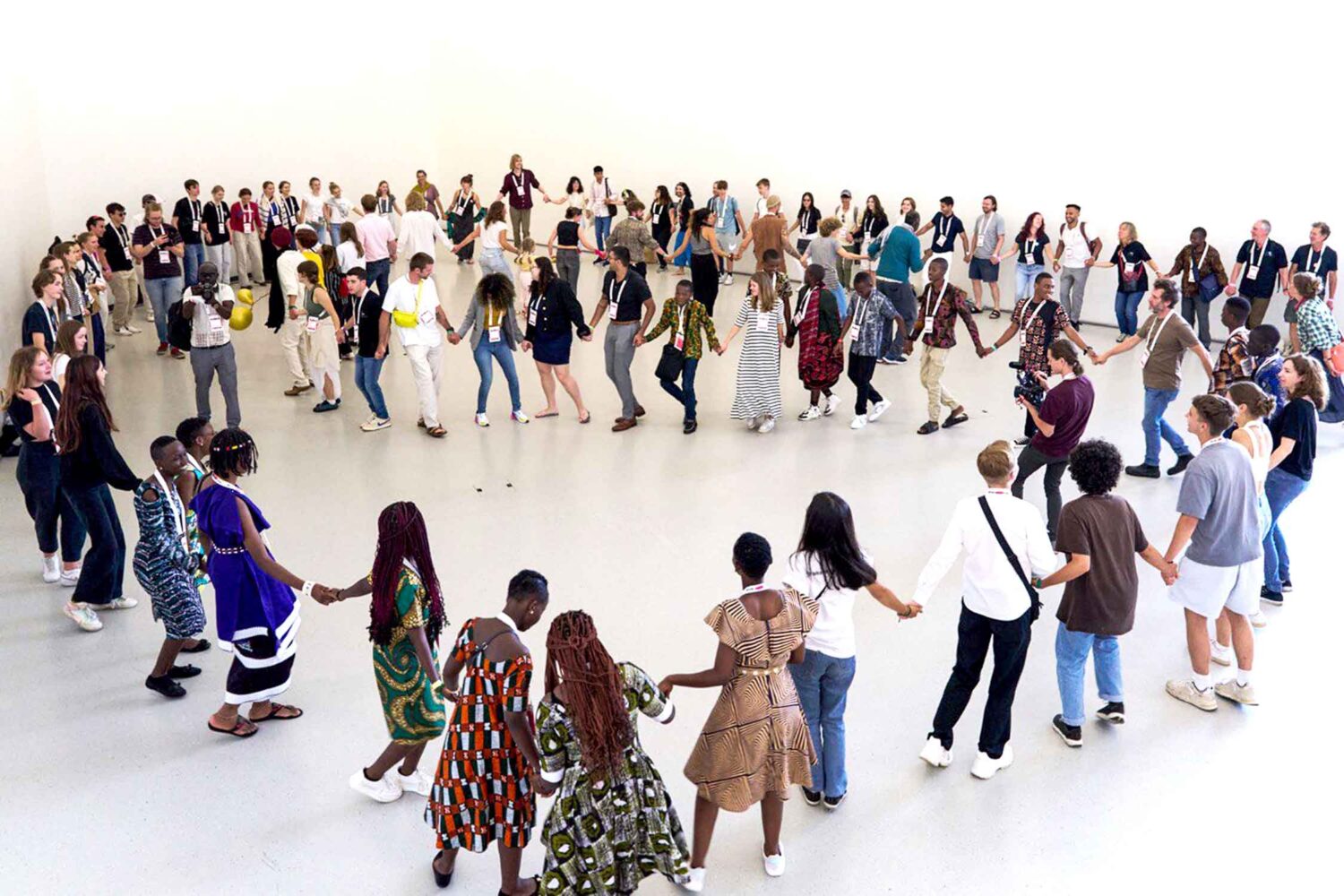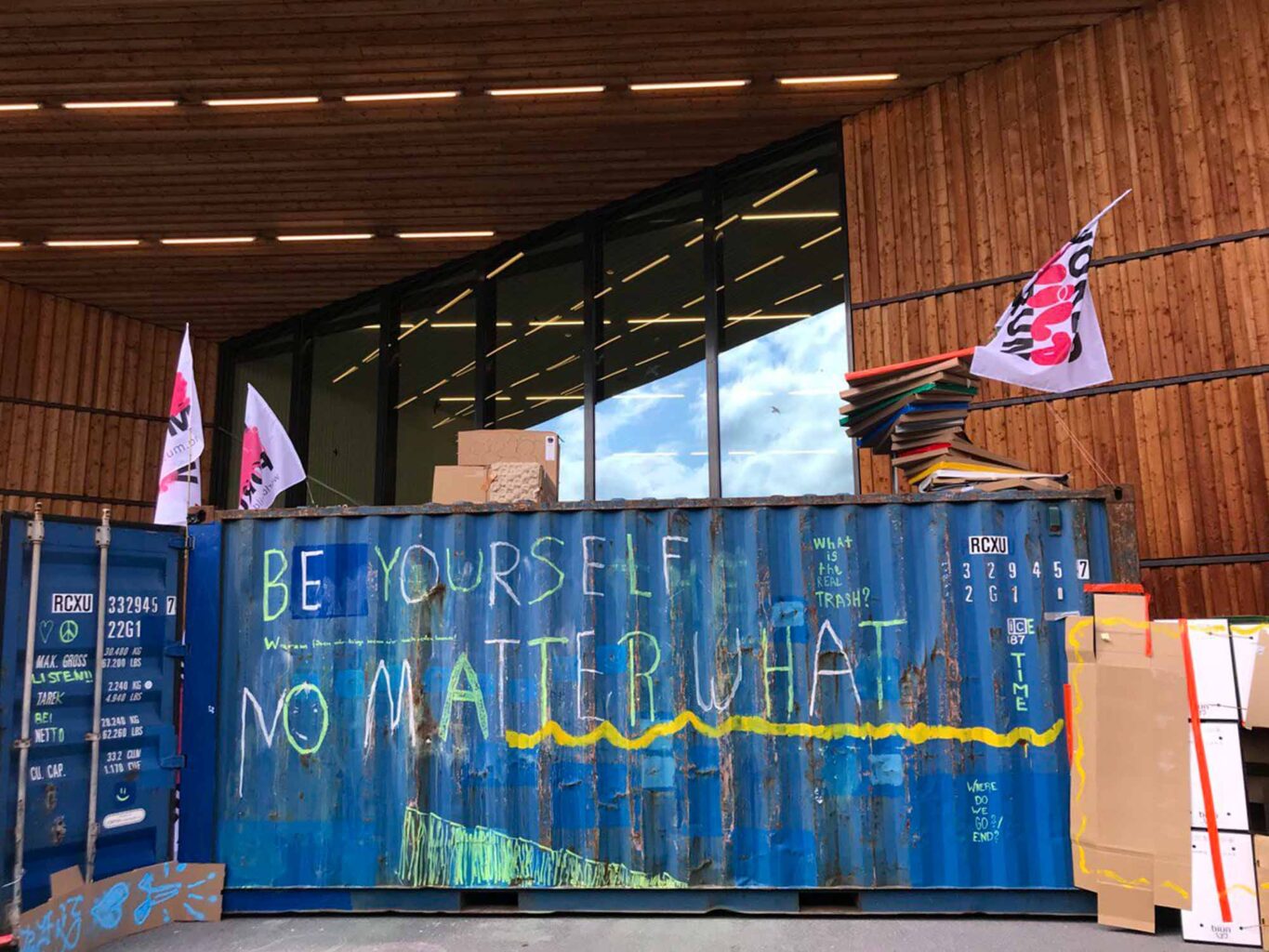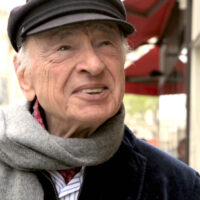The World Child Forum was held for the first time in July 2023 in Davos, Switzerland. Here are some impressions from the perspective of the young people who attended the event, written by one of those young attendees.
“If we really want to shape our future in a sustainable way, it is essential to take into account the enormous treasure of creative will in children and young people. Their connection to the essentials and their often unbiased view of a world worth living in must be our guide and spur for action. It is not we who help young people, but they who help us. And we need their help and cooperation more than ever,” says Bernhard Hanel, founder of the World Child Forum (WCF). (An interview with Bernhard Hanel was published earlier this year: The Future in the Hands of Children.)
This year, Hanel was able to implement this vision for the first time—in an event held at the same place and in the very same rooms as the World Economic Forum (WEF)—not merely with a view towards the future but from the view of the human beings who carry the future within them, the children and youth. With the foundation of the World Child Forum, Hanel and his team—which includes three young people—are pursuing the goal of creating a “playathon”: a melting pot for extraordinary solutions where children and young people can exchange their ideas and present them in a serious way to the world community; a forum where young people, with their ability to see and say things as they are, can advise adults.
Our Choice of Venue
Davos, Switzerland, at 1560 meters, is the highest city in Europe. It is known mainly for hosting the World Economic Forum (WEF), where participants gather every year at the end of January at the large congress center. The WEF event is organized by a Swiss foundation and lobbying group of the same name. Numerous members, including leading international economic experts, entrepreneurs, politicians, scientists, societal actors, and journalists, come together to discuss the current global issues.
The WEF annual meetings are financed both by participants and by Switzerland itself. In 2019, the event cost about 9.5 million Euros. Switzerland deploys roughly 5,000 soldiers annually to secure the traffic routes, the occupied buildings, and the airspace. So, it is clear that the World Economic Forum is a meeting of the world’s most powerful, influential, and financially most dominant human beings and companies. It is a large, costly, and glamorous event, marked by the wealth of its guests. The forum is controversial, and, to some, it’s even creepy. Factual criticism, debates, and myths about the WEF are ubiquitous.
Now, at that same location, on the same premises where global leaders issue advice “about” the future, the World Child Forum will take place annually, giving advice “with” the future, from the future that dwells in every young participant.
Will for the Future
Under the motto “The World We Want,” the World Child Forum is intended to be a large meeting space where young people and children from all over the world can work together to express their wishes, hopes, and will for the future. But how can the thoughts and ideas of 120 young people be channeled in a useful way? How is it possible that, in only three days, all of the participating young people, who have never met, will come to understand themselves as a unified whole and be able to focus themselves and the future from the point of view of a truly tangible “We”?
The ice was broken among the participants immediately in the conference opening with tremendous merriment and togetherness, dancing, group singing, and hugs. We felt that we were all one and belonged together, even if we all came from different parts of the world. The days followed a fixed schedule. At 10 a.m., all the participants gathered in the congress center, where presentations were held in English and German. Each morning after the greetings, all the adults were kindly asked to take their leave so that a “safe space” could be created for the young people, where no one would be influenced by the presence of any authority figure. One of the mentors created a small performance with us in the evening. “There is a new myth,” he began, telling the story of a world where human beings became more and more clever, their minds more and more efficient—they could think up anything and build anything they wanted. But their hearts froze because they could only grasp the world with their thoughts. They were rich, had everything they wanted, and yet remained unhappy and lonely. Then, there was a moment when a new kind of human being was born, with the ability to melt hearts and remind people again what makes us truly happy.

Work for the Future
The days were filled with eleven different workshops, each focusing on various current events, which the participants could freely sign up for based on their own interests. The topics ranged from the future of schools and education to the question of who owns the earth to building models of cities according to the wishes of children and young people. Some topics were of more immediate concern to the attendees than others. While the workshop “Pros and Cons of AI (Artificial Intelligence)” had only three participants, “Diversity in Globalization” and “Perspectives on the Situation between Ukraine and Russia” were entirely overrun. The background of the participants sometimes influenced their choice of workshop. For the young people from Tanzania, education was the most urgent topic, while those from countries with higher prosperity were more concerned with the question of tolerance in society.
One of the workshops designed a container that was placed at the front entrance of the congress center. This container had an important meaning: it will be placed at the next WEF as a message from the World Child Forum, where the ultra-rich and really powerful will be able to see it.
At the “Urban Planning” workshop, a 15-year-old boy worked diligently, focusing on his model. He had set up rows of houses on both sides of a wide street. Behind each of them were large, green yards adjoined to the rows of houses on the next parallel streets. The green spaces were large gardens. The residents were to have the opportunity to cultivate these gardens collaboratively and to share the harvest. He even included two large chicken coops. It was important for him that this “urban agriculture” was not just fun but actually contributed to the healthy nutrition of the community. There was also a strong desire for “green” living in the models of other participants: making cities more natural, not making everything look the same, getting people to ride bicycles, and banning cars as much as possible “for better air and a better sense of life.”
In the workshop “Diversity in Globalization,” the participants discussed some of the difficulties they’ve experienced in their encounters with others: Do I have to accept an opinion which I cannot or do not want to understand at all? Can I tolerate an opinion without accepting it? If I want to be open to all parts of society and international cultures, do I have to accept the people and opinions that do not accept me? One thing they could all agree on: truly living with sympathetic openness and acceptance is quite difficult.
Talking with Each Other
There was a similar experience for those who dealt with the situation between Russia and Ukraine. Young people from both countries met face-to-face. They tried to do what the adults in positions of power cannot or do not want to do: discuss the situation objectively with each other without taking the other’s opinions as personal attacks. But, finding a real consensus proved difficult. Admittedly, the young Ukrainian, who already had a family history of conflict, could understand that the Russian young people only wanted to strive for a peaceful solution to end the war in their own country. Still, he felt it was insufficient and irresponsible. “Maybe your father and my father are confronting each other right now and have to shoot at each other.” When fear and emotion are involved, a factual exchange of views becomes a major challenge. Even more so because those directly affected feel a much greater sense of urgency than those who are only theoretically informed about the events. I also only really understood that there is actually a war going on in Europe when I spoke directly with a young person from Ukraine. He told me that his father, relatives, and friends his age were already fighting as soldiers and that he had not heard from many of them for a long time. He had fled shortly before his 18th birthday, so the border guards had to let him leave.
All the young people I asked naturally wished for an end to the war. One ten-year-old boy said, “I wish wars would stop because wars are pointless.” Then he ran after a balloon kicked toward us by other children playing. I stood there a bit perplexed. Fundamentally, there’s nothing naïve about what he said; it struck me. But precisely because it is so simple, only a child can say it.
One workshop was initiated by a participant herself. Her question was, “What can we do right now?” This, in particular, showed exactly what was in the air throughout the conference: a great desire for effective and immediate action! In smaller groups, we talked about what problems we see occurring most often in our respective countries and societies at the present time. It was really magical to sit among all these different people from Germany, Switzerland, Ecuador, Israel, Ukraine, and Canada and just listen to each other—to really give each other space to say what we are each concerned about and then to think, seriously and collaboratively, about real solutions. It felt like a rebuttal to all the hate and fear in the world. And even though we could only communicate with moderately good English and our problems were so different, in that moment, we were all the same; we were there for each other; we were filled with affection for the strangers sitting next to us; we were united in the feeling that together we might yet be able to save the world; and also, perhaps, united in this feeling of saving the world, exactly in that moment when we didn’t even know each other, we actually felt we could still be true friends to each other. At the end of the workshop, we presented our ideas.
Effectiveness
One group suggested formulating an open letter to the WEF. The young participants could write, for example, “We will only continue to buy your products if you make the packaging sustainable for the future. If you don’t, we will open a large-scale media campaign against you and stop buying your goods.” Others had an idea that they called the “365 Day Challenge.” This involved creating a social media trend where all participants would agree not to buy new clothes for an entire year. A few young people mentioned a sustainability method already in place: the 3R initiative allows every private person to do something to protect the environment. The 3Rs stand for “reduce, reuse, recycle.” Others wondered how to make the societal discourse more independent so that the view of the people who were actually affected would be what was discussed in the media instead of only the view of the military and economy. For this, they thought, there was a need for non-government-funded broadcasting, where ordinary people from different parts of society could talk and hold discussions with each other. There was an overall wish for more direct exchange and less staying in one’s own bubble, scolding others without even really understanding the concerns of those involved. One sentence in particular crystallized out of the group discussions: “Think globally, act locally.” It became clear to everyone that without power and money, real change can only be generated in the personal sphere of activity. Everyone became aware that large-scale change is a long process. Nevertheless, we discovered a great trust amongst us that, together, we will manage, piece by piece. A young Canadian woman summed it up well with a funny metaphor: “Imagine you had to eat a whole elephant. At first, you would despair and wonder how on earth you were going to do it. But, if you get some friends to join you and just eat one bite at a time, eventually, you’ll be done.”

Respect, Rebellion, Resistance
In the closing circle, all the questions and messages were collected and hung up in the container, which will go around the world like a treasure chest and will stand as a message from the World Child Forum at the WEF. A very old man, as a symbol of the generation opposing us, so to speak, told how he was born in a bunker in the last days of World War II and was involved in the reconstruction of his country as a youth. He said that when he sees us and what we are doing, he sees the same unstoppable energy. He ended his speech with the words “respect, revolt, resistance,” drawing huge cheers. In the last hours of the first official World Child Forum, all interested adults were invited to come to the congress center to participate in the “Heart Melting Dance” we had all learned and to see the results of the workshops. At the end, each young person had an adult partner that he, she, or they took to the closing dinner. The “Generations Dinner” was held at a very long table that seated everyone present. Anyone who wanted to could stand up during the dinner and address the community. The Mayor of Davos stood and expressed enthusiasm and much goodwill towards the Forum.
More than 120 young people participated in this first official World Child Forum. They came from Tanzania, Israel, Brazil, Canada, Ecuador, Colombia, Ukraine, Belgium, Honduras, Russia, Egypt, Germany, and Switzerland. A sense of optimism, unity, and anticipation of the gigantic tasks with which we would all prove ourselves was accompanied by a desire for effective action. Feeling surrounded by friends, despite not knowing each others’ cultures, ways of life, languages, and worldviews, truly felt like the living, experiential rebuttal to all the “hate-isms” fueled by fear or loss in this world. Empowered and grateful for being allowed to believe in themselves, the young people left feeling they were in a new place. Perhaps in the years to come, the World Child Forum will become a crucial forge of impulses that can contribute to a future worth living for all. Perhaps the effective activity will grow, and, in time, the forum will become an event that is truly taken as a serious advisory committee throughout the world. For this to happen, media attention on the event must grow. This year, however, the most important effect was simply to light the fire of those present and to bring people together. One thing is clear: the World Child Forum is here to stay.
The container with the collected treasures of the World Child Forum stood at the Goetheanum World Conference in Dornach from September 27th to October 1st, 2023, at a place where people were invited to speak together about the future.
The container with the collected treasures of the World Child Forum stood at the Goetheanum World Conference in Dornach from September 27th to October 1st, 2023, at a place where people were invited to speak together about the future.
More World Child Forum
See also An interview with the founder of the World Child Forum, Bernhard Hanel, was published in Das Goethenaum earlier this year: The Future in the Hands of Children.
Translation Joshua Kelberman
All Photos World Child Forum (if not mentioned otherwise)









